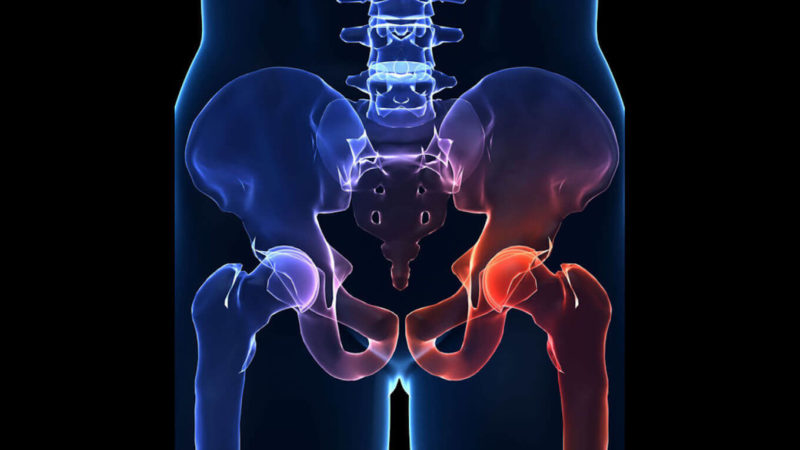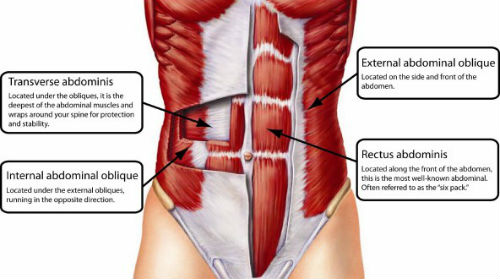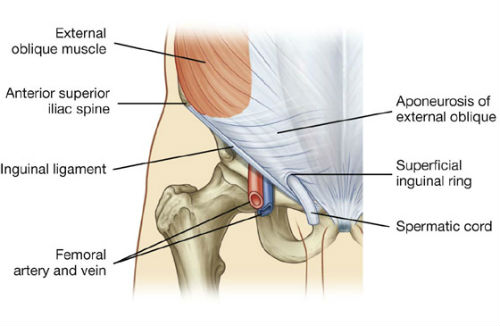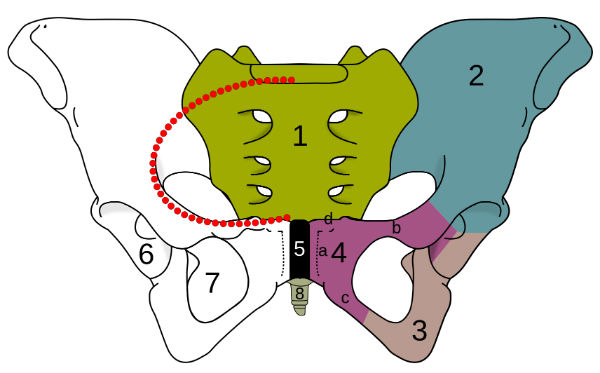
“Where is a Sports Hernia?” is likely the first question on your mind when you start to experience pain in your groin and pubic area.
Get the ULTIMATE Sports Hernia Master Guide with 30+ included resources, an in-depth rehabilitation program, tips, tricks, and more! Successfully diagnose, treat, and cure your sports hernia with this complete master guide created by a sports hernia specialist. Note that it is still highly recommended to read this article in full to understand how to get the most out of the guide to treat and cure your sports hernia or groin pain.
After you have learned about the extremely important details of athletic pubalgia (and know what not to do), the next step is learning about exactly where it is.
Because the injury is very complex, the actual tear or injury site could be located in several different areas:
- Rectus abdominis (6-pack muscle)
- External oblique muscles
- Adductor muscles (inner thigh)
- Transverse abdominis (deep, inner abdominal wall)

While this is true, pain is almost always felt in one specific area: the superficial inguinal ring. Simply put, the ring is a triangle-like opening that forms to make the exit of the inguinal canal. The inguinal canal holds different nerves and the spermatic cord for men or round ligament for women. In essence, it is responsible for protecting these special nerves and soft tissues.

The superficial ring is the opening that allows passage of the spermatic cord. This area sits directly on top of the pubic tubercle—the bony, pointed bone deep in your groin on either side of your body. This area will become extremely tender in the case of a sports hernia.
Additionally, the pain is also often felt along the pubic ramus area which is directly next to the pubic tubercle. While the source of the pain may be coming from these areas, it can also radiate into the leg, other areas of the groin, and lower abdomen.
Now That You Know Where a Sports Hernia Is Located, Take the Self-Test
While it is important to receive further examination from a specialist to confirm the diagnosis, it is possible to diagnose yourself with relatively high accuracy from the comfort of your own home without the use of special devices or instruments.
When conducting the self-test, you will need to rate your tenderness and pain on a scale from one through five, with zero being no pain.
- 0: No pain or tenderness
- 1: Small amount of tenderness and pain
- 2: Mild level of tenderness
- 3: Moderate degree of pain and tenderness
- 4: Severe pain
- 5: Pain so bad that you can barely touch it
To complete the self-examination, you will need to be wearing light shorts or undergarments only. Using your finger, apply pressure to the pubic tubercle and pubic ramus area.

4c is the pubic ramus, and 4d is the pubic tubercle–both areas to probe for pain with your finger.
If the pain you experience while completing the self-exam reaches 3 or higher on the scale, there is a strong possibility that surgery may be the only option to successfully alleviate pain symptoms.
On the flip side, if your pain is less severe or not in these areas, there is a very strong change that you can recover fully with the use of a full-core rehabilitation approach contained within the sports hernia treatment plan.
Where a Sports Hernia is Not Located May Be Just as Important
While pain is felt in the groin areas mentioned above, increasing research is pointing to the fact that hip dysfunction and athletic pubalgia are highly correlated. Even though pain may not be felt directly in the hips in all cases, they very well could be the true cause groin pain and disability.
In other words, if your hips and the muscles of your lower body and posterior chain are weak and cause your pelvis to behave with poor posture, you are much more likely to develop the terrible groin injury. This is because when your hips cannot move properly, it places a high amount of stress on your lower abdominal wall—the one that is deep in your groin (the transverse abdominis).
This stress can result in tears or strains. The level of severity of the injury then determines if conservative rehab can be used or if surgery is required. A pain level of 3 or higher may only be treatable with an operation, though rehabilitation and treatment is recommended for at least 6-10 weeks in all cases before surgery is even considered.
This is because the 3-point scale rule isn’t set in stone and some people may be able to recover regardless with conservative treatment. Two case studies currently exist showing the successful non-surgical recovery of a pro hockey player and a pro golfer, so it is definitely possible.
By completing the outlined exercises, stretches, and mobility movements of the full-core treatment plan, the athletes restored strength and mobility to their hips, allowing their pelvis to move properly and freeing them of chronic groin pain.
